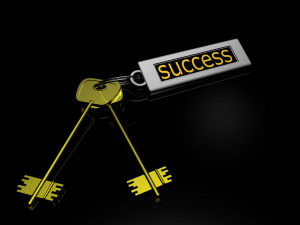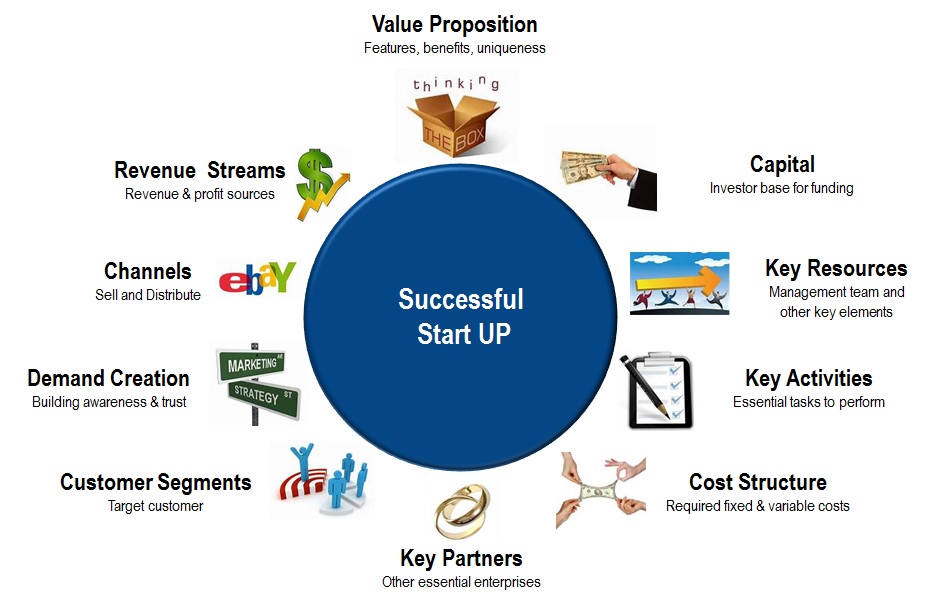
Paying attention to these 10 essential elements for a successful startup will greatly increase the prospect that you will get your hands on these keys!
Transforming breakthroughs from the lab into successful companies is a daunting but ultimately rewarding task. For some, there is no better validation of the quality and value of their scientific discoveries than the kind you get when it generates demand from paying customers. However, according to Shikhar Ghosh, senior lecturer at the Entrepreneurial Management Unit at Harvard University, 75% of startups fail largely because they have neglected one or more of the 10 essential elements of successful startups.1
The 10 Essential Elements of a Successful Startup Are:
- Compelling Value Proposition: Having a great idea or discovery does not always mean that you have a product or service that will generate the customer demand required to sustain a business. Having an experienced Board of Advisors can help you figure this puzzle out and will also provide you with the introductions to the industry experts and Key Opinion Leaders you need to feel confident that you have a viable business hypothesis.
- Capital: How much money will you need to keep your operation running until you start to generate revues? How will you fund the company? Grants, Foundation money, investments and bootstrapping are just some of the ways that entrepreneurs get the funding they need to get their product or service to market.
- Key Resources: You need key people on your founding team with the technical know-how and business sophistication to shepherd you company from the early days to a real going concern. In addition to the people, you need to make sure they have access to the resources they require to succeed like adequate lab space, access to equipment, reagents, regulatory guidance etc.
- Key Activities: Seems like an obvious one. It is critical to develop a detailed roadmap that describes all of the strategies, tactics and activities that need to be successfully completed to reach your ultimate goal for the company. This plan will include critical milestones along the way so that the team can monitor progress and make course corrections as needed. Also, this plan will allow you to develop a realistic budget which will help you to mitigate the risk of running out of capital before you have achieved a successful launch. The best roadmaps break this down to enough detail to guide not only month to month activity but day to day efforts as well.
- Cost Structure: After you have launched your product or service, your focus now shifts towards expanding profitability. Your Operations team will be looking to reducing the costs of providing your product while your Sales & Marketing team will be executing on tactics that will bring in significantly more leads, and more sales.
- Key Partners: You don’t need to go it alone. Establishing strategic partnerships can help you expand your market reach when you set up co-marketing agreements and save capital when you share the cost of space, equipment and other resources that you can both profitably share. Your team will also benefit from the experience and perspective of your partner as your relationship grows stronger.
- Customer Segmentation: This is something that needs to be started way before you are even ready to sell. It is important to know both who will want to buy your product as well as who will not. This will not only help you with your marketing efforts but will also insure that you build the right offering.
- Demand Creation: Once you have a good idea who your customers will be, figuring out how to reach them and what message they will find most compelling becomes a lot easier. Running an effective beta-evaluation with perspective customers will provide you with key insights that will go a long way to insuring that you have a strong product launch and have a Sales & Marketing plan that will quickly scale up to meet the business growth goals you have set for the company.
- Sales Channels: Having a well thought out Channel Management plan will greatly increase the chances that you will have a strong launch. It is important to know how you will sell to your customers and then develop the resources and team that will allow you to execute this well. Different channels have different demands and processes. Be sure to consider whether you will be using a direct sales force, distributors, a combination of the two and how that would work etc. Don’t’ forget to consider e-commerce!
- Revenue Streams: Another seemingly obvious ‘element’. Don’t’ forget that you can get revenue for intellectual property that you can monetize through licensing fees if you don’t commercialize it. Be sure to consider other ‘products’ like extended warranties, service agreements and advanced training offerings for example. There are many ways to generate revenue besides what you get from sales of your core product or service.

Making sure your Founding Team has the expertise to manage the “10 Essential Elements” is the best way to improve the odds of success for your startup.2
The Secret to Getting this Right
The secret to keeping on top of all these ‘elements of success’ is having a founding team with the depth and breadth of experience and know-how to cover all of these areas. Each ‘element’ can require very specific skills and tactics. Furthermore, it is critical that these are customized to fit the particular needs of your company. The other thing to keep in mind here is that these ‘elements’ are not static in their timing and demands for resources. Having at least a few team members that have done this before will insure that you get all of this right. Founders should look to establish a Board of Advisors very early on to help manage all of this and or help you to find these key people for your founding team.
Notes:
- Venture Capital Secret: 3 of 4 Start-Ups Fail
- The Life Science Startup: Bringing Innovative Science to Market with the Right Team
Picture Credit: © Suravid | Dreamstime Stock Photos & Stock Free Images


